Speech Sound Intervention
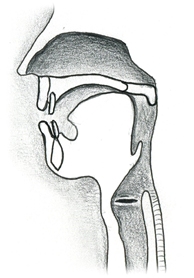
Speech Sound Intervention: Even in the communication age with its rapid exchange of digital messages via email, twitter, Facebook and a multitude of other digital media, speech is, arguably, still the most important way we humans communicate with each other. To produce speech we have as a species ingeniously learned adapt and make use of eating and breathing mechanisms to produce intelligible speech.
Much of this book will focus on how speech sound structures and articulators shape phonemes. During speech awareness training children are introduced to the concept that connected speech is composed of individual sounds. This is an important skill for children to learn, as having an awareness of individual phonemes can later be beneficial when children learn the link between speech sounds (phonemes) and print symbols (letters).
Those of us who work with children to improve their communication, need to have a solid grounding in speech therapy techniques to better engage children with speech errors and help children to communicate a little better.
Speech sound errors are perhaps the most common communication disorder that speech pathologists assess and treat. Children who make the most common speech sound errors have difficulty correctly producing phonemes such as /k/ /l/ /r/ s/, etc. Most speech sound errors are made in the absence of anatomic, motor or sensory limitations.
Children, when attempting to learn the phonology of language, will often make errors because of a difficulty in perceiving and producing certain phonemes. A direct result of this difficulty is that children will often omit, substitute and simplify phonemes. In younger children, this is a normal part of speech and language development. We call these searching strategies phonological processes.
Speech Sound Intervention - Why we Should Work on Speech Sound Errors

If children speech sound errors are left untreated, there is a risk that the error or errors will remain, even into adulthood hard-wired into a person’s speech patterns. There is also a risk that speech sound errors may turn up in children’s written language.
Parents may attempt to correct their child’s speech sound errors with, “Don’t say tat, say cat!” The child’s response will invariable be, “But I did say tat.” The child has no insight into his speech sound error because he has yet to fully develop meta-linguistic awareness. And it is difficult to change a child’s speech error if the child has no awareness of the error.
An important part of speech therapy is to train children to be aware of their own sound errors. Speech pathologists are trained to help children to be more aware of their speech sound errors, but with practice and some basic training a parent or teacher can assist children to be are of when their sounds are error sounds.
In fact, teachers, teacher aides and parents are best placed to assist children with speech errors because they spend much more time with children and so have numerous opportunities to assist children correct speech sound errors.
Click to learn about Traditional Articulation Therapy
Click to learn about Minimal Pairs Intervention (linguistic method)
Click to learn about Multiple Oppositions Intervention (linguistic method)
Click to learn about Empty Set Intervention (linguistic method)
Click to download the instruction and components for the Turbo Card Board Game (Handy game to be used either during speech intervention or as a reward activity)
Speech Intervention Sequence: Comprehensive speech therapy sequence method using traditional articulation intervention techniques
Speech Sound Intervention - Speech Therapy Pages
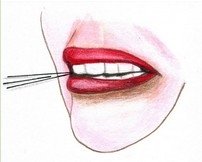
Speech Sound S: This page features a range of speech sound intervention techniques to efficiently and effectively stimulate the /s/ sound.
Speech Therapy Sequence - s Sound: This page features speech intervention stages, from sound in isolation to word level.

Speech Sound z: This page features a range of speech sound intervention techniques to efficiently and effectively stimulate the /z/ sound.
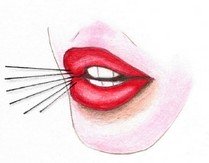
Speech Sound ʃ: This page features a range of speech sound intervention techniques to efficiently and effectively stimulate the /ʃ/ sound.
Speech Therapy Sequence - sh Sound:
This page features speech intervention stages, from sound in isolation to word level.
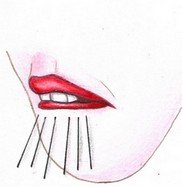
Speech Sound f: This page features a range of speech sound intervention techniques to efficiently and effectively stimulate the /f/ sound.
Speech Therapy Sequence - f Sound:
This page features speech intervention stages, from sound in isolation to word level.

Speech Sound v: This page features a range of speech sound intervention techniques to efficiently and effectively stimulate the /v/ sound.

Speech Sound th (unvoiced): This page features a range of speech sound intervention techniques to efficiently and effectively stimulate the /θ/ sound.

Speech Sound th (voiced): This page features a range of speech sound intervention techniques to efficiently and effectively stimulate the /ð/sound.

Speech Sound tʃ: This page features a range of speech sound intervention techniques to efficiently and effectively stimulate the /tʃ/ sound.
Speech Therapy Sequence - ch Sound:
This page features speech intervention stages, from sound in isolation to word level.

Speech Sound dʒ: This page features a range of speech sound intervention techniques to efficiently and effectively stimulate the /dʒ/ sound.
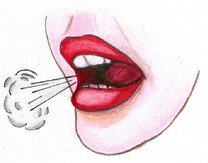
Speech Sound k: This page features a range of speech sound intervention techniques to efficiently and effectively stimulate the /k/ sound.

Speech Sound g: This page features a range of speech sound intervention techniques to efficiently and effectively stimulate the /g/ sound.

Speech Sound l: This page features a range of speech sound intervention techniques to efficiently and effectively stimulate the /l/ sound.

Speech Sound r: This page features a range of speech sound intervention techniques to efficiently and effectively stimulate the /r/ sound.
